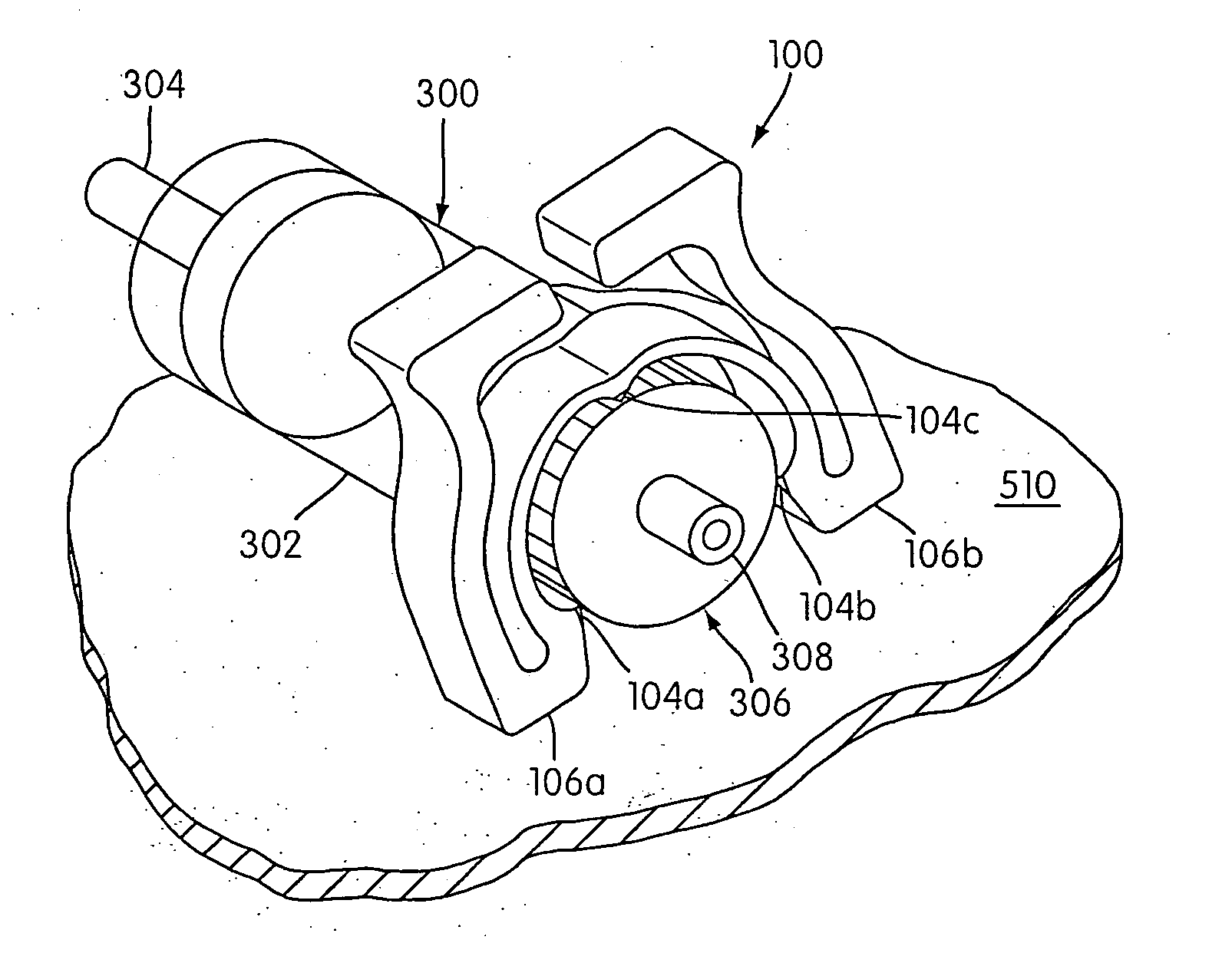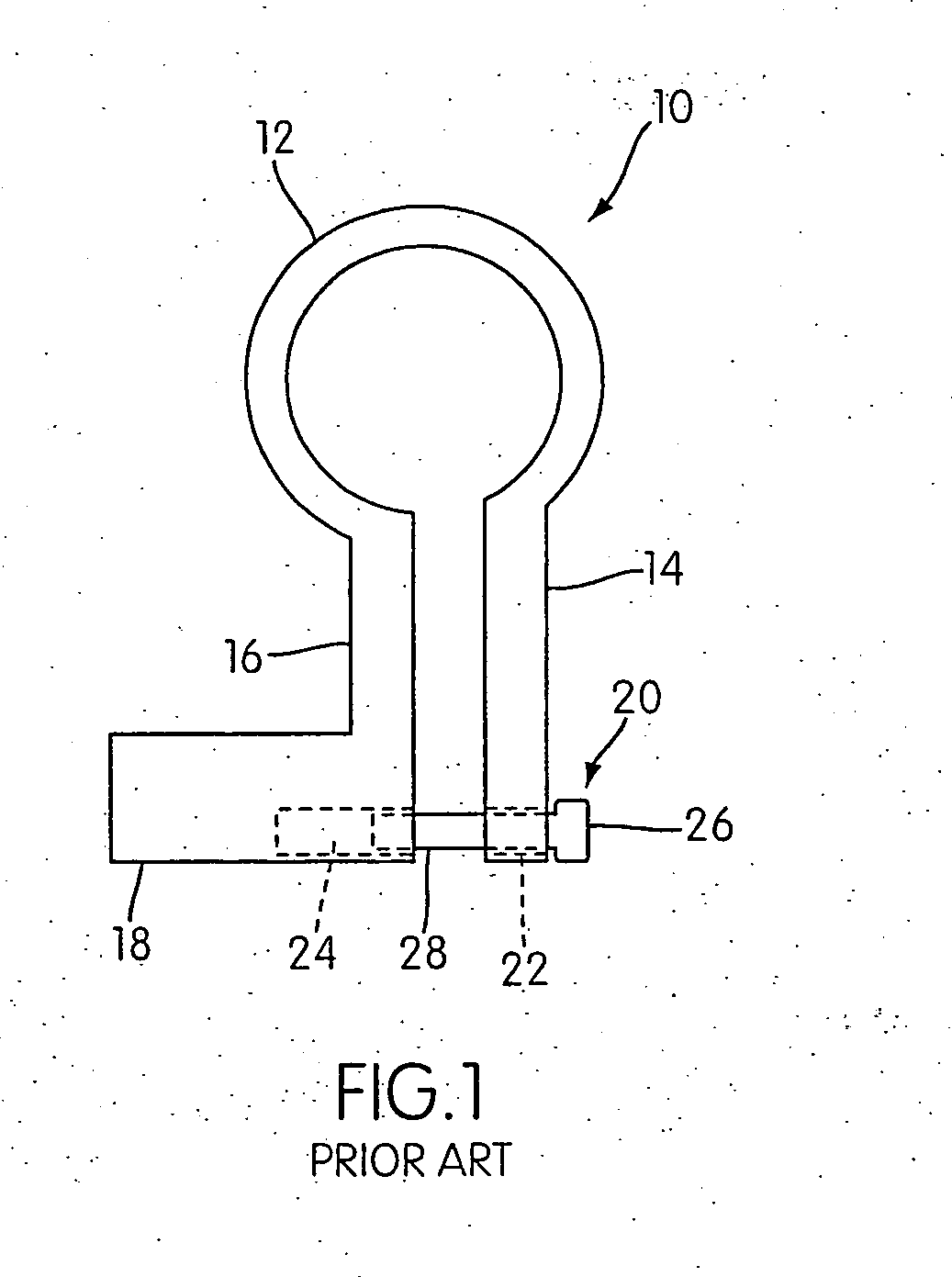Clamp and method of making same
a technology of clamping mechanism and clamping mechanism, which is applied in the field of clamping, can solve the problems of not being suited to tubular structures, unable to accurately limit the amount of force exerted by clamping structures, and being difficult to use, so as to prevent over-tightening, prevent cracking of glass barrels, and be convenient to use.
- Summary
- Abstract
- Description
- Claims
- Application Information
AI Technical Summary
Benefits of technology
Problems solved by technology
Method used
Image
Examples
Embodiment Construction
FIGS. 3A-3D illustrate a clamp according to a preferred embodiment of the present invention generally indicated by reference number 100. Referring to FIG. 3A, the clamp 100 has a clamp body that is generally symmetrical about a planar section B-B and has two opposing sections 100a and 100b, which mirror one another with reference to plane B-B. Each section 100a, 100b includes an arcuate section 102a, 102b, which together form a hoop section 102 that defines a generally circular cavity for receiving an object (e.g., cylindrical object 200—which may be a solid cylindrical element or a hollow (i.e., tubular) cylindrical element—shown in FIG. 3A in phantom) to be clamped. Hoop section 102 may also include anti-slipping elements formed along an interior surface 103 thereof which are constructed and arranged to prevent slippage of the clamp 100 with respect to an object being clamped. For example, the anti-slipping elements may comprise a number of circumferentially-spaced radial projecti...
PUM
| Property | Measurement | Unit |
|---|---|---|
| angle | aaaaa | aaaaa |
| angle | aaaaa | aaaaa |
| angle | aaaaa | aaaaa |
Abstract
Description
Claims
Application Information
 Login to View More
Login to View More - R&D
- Intellectual Property
- Life Sciences
- Materials
- Tech Scout
- Unparalleled Data Quality
- Higher Quality Content
- 60% Fewer Hallucinations
Browse by: Latest US Patents, China's latest patents, Technical Efficacy Thesaurus, Application Domain, Technology Topic, Popular Technical Reports.
© 2025 PatSnap. All rights reserved.Legal|Privacy policy|Modern Slavery Act Transparency Statement|Sitemap|About US| Contact US: help@patsnap.com



